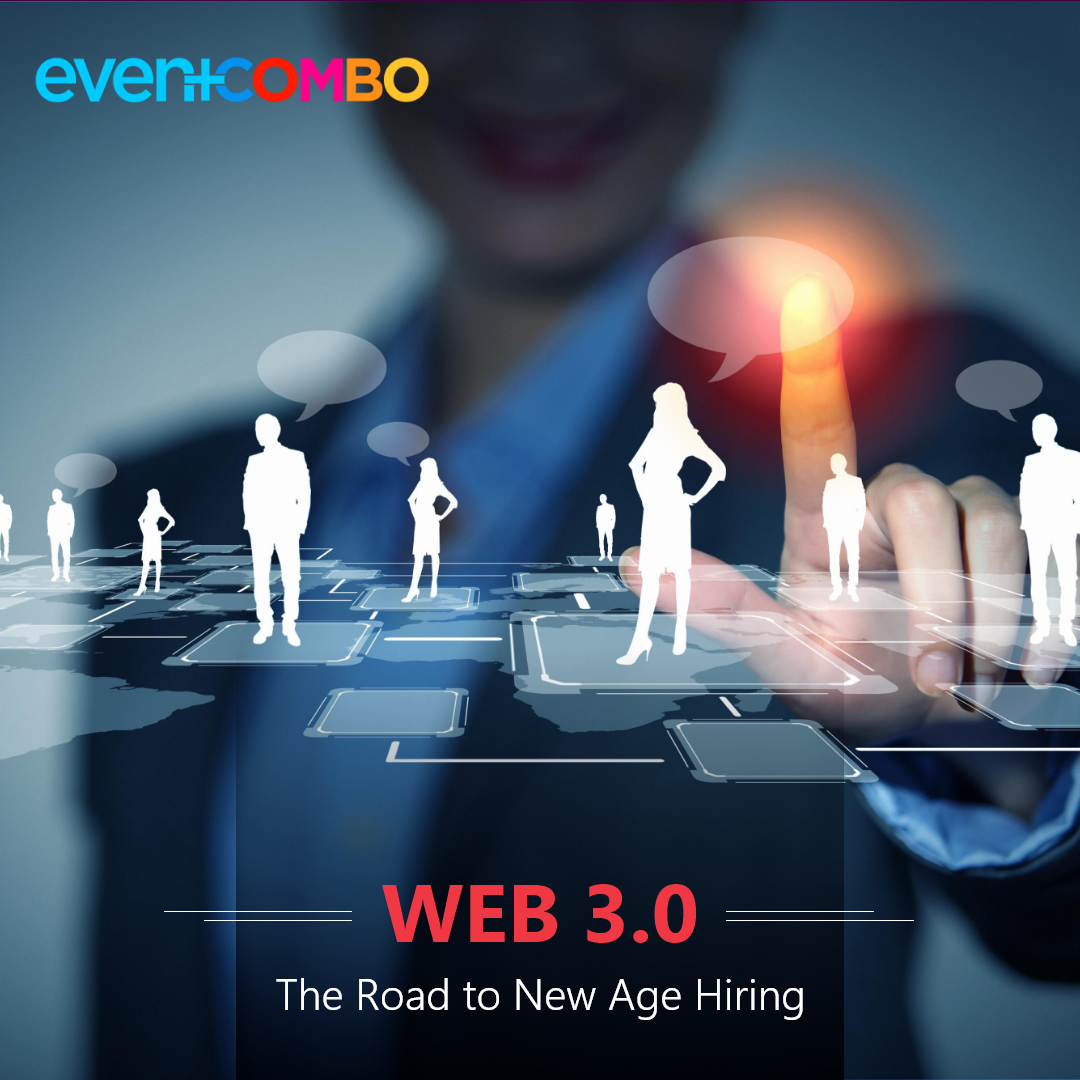

From events to health care, few industries have remained untouched as the world continues embracing digital transformation.
This change has meant the need for a new hiring approach, with employers having to adapt to new technologies, and interviews often carried out virtually, often with candidates spread across the world. But what facilitated these changes? Like many areas, the modern workplace has been massively impacted by the evolution of the internet.
You only need to look around yourself to see how work has changed in the last 20 years. You probably carry out meetings through video conferencing apps (a Canadian business might choose a Canadian business VoIP from Dialpad) and use different collaboration tools every day.
With as many as 31% of employers now facilitating full-time remote work, digital transformation is essential.
But we now have a new vision of what the future internet might look like: Web 3.0. But what does this mean for the process of recruiting in the modern age? We’ll explore that and more in this article. But first things first, what is Web 3.0?
The Web Timeline

Before we can get into Web 3.0, we need to talk about what came before it. Let’s start at the beginning and work our way up. We’ll also talk about how the hiring process changed with each iteration of the web.
Web 1.0
This is the earliest form of the internet, the first step towards a globally connected network. As you can imagine, Web 1.0 was much more basic than its successors. Many of the aspects associated with the modern internet were lacking.
Whilst the modern web offers visualizations and interactivity, this iteration focused entirely on content. People would create web pages for users to view.
But although basic, Web 1.0 offered the first glimpse into how the hiring process would change. In 1994, Monster Board, the first online jobs board, was launched. It would be nine years before the arrival of LinkedIn.
Web 2.0
This is the version of the internet that we know today. Web 2.0 introduced a world of interactivity and a new focus on user experience. This version was also much more versatile.
More and more ways of accessing the internet were devised. The web had to cater to users on cell phones, tablets, and game consoles.
Innovations have been transformational. With greater connectivity than ever, businesses could reach customers more easily than ever. Networking and events management also became much easier. An organization could post an event online and easily spread the word.
Things have come a very long way since fax machines were a core part of business communications. Today, faxing can sometimes be useful, as this introduction to fax numbers that work in Canada demonstrates. However, organizations can now contact people from across the world at the click of a button using a variety of tools.
Web 2.0 also introduced the first major changes to the hiring process. People could submit job applications online. With the introduction of “one-click apply,” an applicant could send their resume in seconds. With advancements in digital marketing, hirers could also reach applicants in more targeted ways than ever before. Besides that, we have the freelancing platform that employers can use to hire short-term employees or freelancers to achieve company milestones.
Web 3.0
This brings us to the next stage. Web 3.0, believe it or not, has some aspects in common with 1.0. Let’s think for a moment about Web 2.0. When we think about the internet, we think of big names like Facebook, Amazon, and Google.
The early days of the internet were different. Instead, personal web pages dominated the web. Major players were yet to emerge on the internet, so the web was largely decentralized.
Web 3.0 envisages a return to decentralization. Data is stored across multiple servers instead of in one specific place. This means that the services that we use will no longer be hosted by one platform but by everybody.
It also allows users to have more control over their data. Instead of information being in the hands of big corporations like Google, users have ownership of data.
It’s important to say, at this point, that Web 3.0 is a concept of what the internet might look like. But the rise of technologies such as blockchain does seem to indicate a passage of travel.
But with all this said, how does Web 3.0 impact the world of hiring? Here are four changes you can expect to see.
1. Access To Verified Talent

Currently, there is a standard process for hiring online. You post an ad on a jobs board and wait for candidates to get in touch. But what if there was an alternative route? With the power of blockchain technology, Web 3.0 allows hirers to view a candidate's skills and experience. An employer would simply need to view their Web 3.0 profile.
What’s more, blockchain cannot be hacked or modified. This means that a candidate cannot alter the system to create fake results. In other words, Web 3.0 allows instant access to a pool of verified talent. This brings many benefits.
You’ll feel much more confident in your hiring decisions. You’ll build stronger teams by ensuring employees have the right skills and experience for a job. Not only that, but the process of hiring will be less time-consuming. You remove the need for multiple interviews to ensure quality.
2. More Efficient Processes
The current hiring process means that you need to go through a mediator, namely a jobs board, to reach talent. While organizations may hire on their website, 59% of job seekers use online job boards to search for openings.
As things stand, power is in the hands of the jobs board. They can charge expensive fees to organizations. Moreover, the board has complete control over the network and its data.
Web 3.0 gives employers control over their networks. This cuts out fees and gives hirers complete control.
3. DAOs Are Key to Decentralization
You’re probably wondering, “what is a DAO?” The term stands for decentralized autonomous organizations. They represent a break from centralized authority with a community-led, bottom-up approach. They use social tokens, known as tokenomics, to vote on company decisions via the blockchain. After the process, all voting will be publicly available.
How does this affect hiring? As employers step away from centralized networks, we’ll also see a move away from traditional employment. Instead of hiring employees, organizations will opt to collaborate with freelancers.
DAOs will democratize the gig work environment for both companies and talent. It allows freelancers to bypass platforms such as Upwork and Fiverr (which charge a percentage of fees). Instead, they can use decentralized networks to contact clients directly and avoid fees.
Network users can earn tokens for contributions such as referrals. In this way, the network grows further.
4. Speed Up Hiring with NFTs

NFTs, or non-fungible tokens, are one-of-a-kind assets that can’t be replaced. Currently, they are seen most commonly in the sale of digital art. Like traditional art collecting, NFTs belong to an individual. While they can be copied, ownership still belongs to the buyer.
But while NFTs are commonly seen in digital art, they can be used for many different purposes. One example is ticketing for digital events. An NFT can authenticate an attendee’s right to enter an event. Another example is real estate. The process of splitting a physical asset is much easier than a physical one.
Believe it or not, NFTs are also used in recruitment. When looking at candidates, you’ll want proof of their expertise and knowledge. As mentioned earlier, blockchain allows us to look directly at the merits of candidates. NFTs can act as proof of experience.
For instance, whenever someone obtains a university degree, they could also gain an NFT. When hirers are looking for new applicants, they view NFTs as an assurance of quality. This saves time for the HR department. There is no longer a need for education background checks, as information is publicly available.
The Impact of the Metaverse
The metaverse is a vision of the future of the internet. This is envisaged as a fully connected 3D virtual world. People interact with the internet in the same way as the physical world.
The internet has probably already replaced certain aspects of the workplace. For example, you might use a VoIP service instead of a standard landline phone. This includes features such as a visual voicemail function, screen recording, and file sharing. The metaverse takes this to the next level. You might call from a virtual office using a virtual phone.
This has many implications for the world of work. You could hold virtual meetings in a digital space where employees could talk “face to face.” You could even go a step further and run a virtual internship program.
The metaverse will enable candidates to get to know prospective employers at virtual recruitment fairs. This gives talent a much greater opportunity to understand the organization and its culture. In-person events won’t be needed to enable candidates to meet prospective employers. Interviews, role-based exercises, and other interactions can all be carried out remotely.
You’ll be able to dip into a wider pool of candidates, no longer restrained by in-person interviews. The opportunity to work with new and forward-thinking technologies is also attractive to prospective talent.
Look Ahead
Is Web 3.0 the future? Only time will tell. What we can say for certain is that the hiring process will continue to change. While this might not mean adopting the entire Web 3.0 model, it will most certainly mean embracing some of it.
Already, we’ve seen some of the areas discussed above in their early stages. The metaverse, for instance, is already in development. We can reasonably expect VR technologies to impact the recruitment process. Other advancements, such as DAOs, are also being used by more organizations.
The change will be gradual but adapting to it is essential. That’s why recruiters need to look to the future. Do the research now, and be at the forefront of change when it occurs.
About the Author - Jenna Bunnell
Jenna Bunnell is the Senior Manager for Content Marketing at Dialpad, an AI-incorporated cloud-hosted unified communications system that provides valuable call details for business owners and sales representatives using Dialpad business phone systems in Calgary. She is driven and passionate about communicating a brand’s design sensibility and visualizing how content can be presented in creative and comprehensive ways. Check out her LinkedIn profile.

Networking events remain the backbone of professional growth, whether you're building a business, recruiting talent, generating leads, or seeking strategic partnerships.

RingCentral Events is a known name in the event platform space. It supports in-person, hybrid, and virtual formats, but today’s event programs need far more depth within each format.

The industry has made it clear that event management platforms must support multiple formats with consistency. This shift has led many professionals to explore vFairs alternatives that provide full event management.